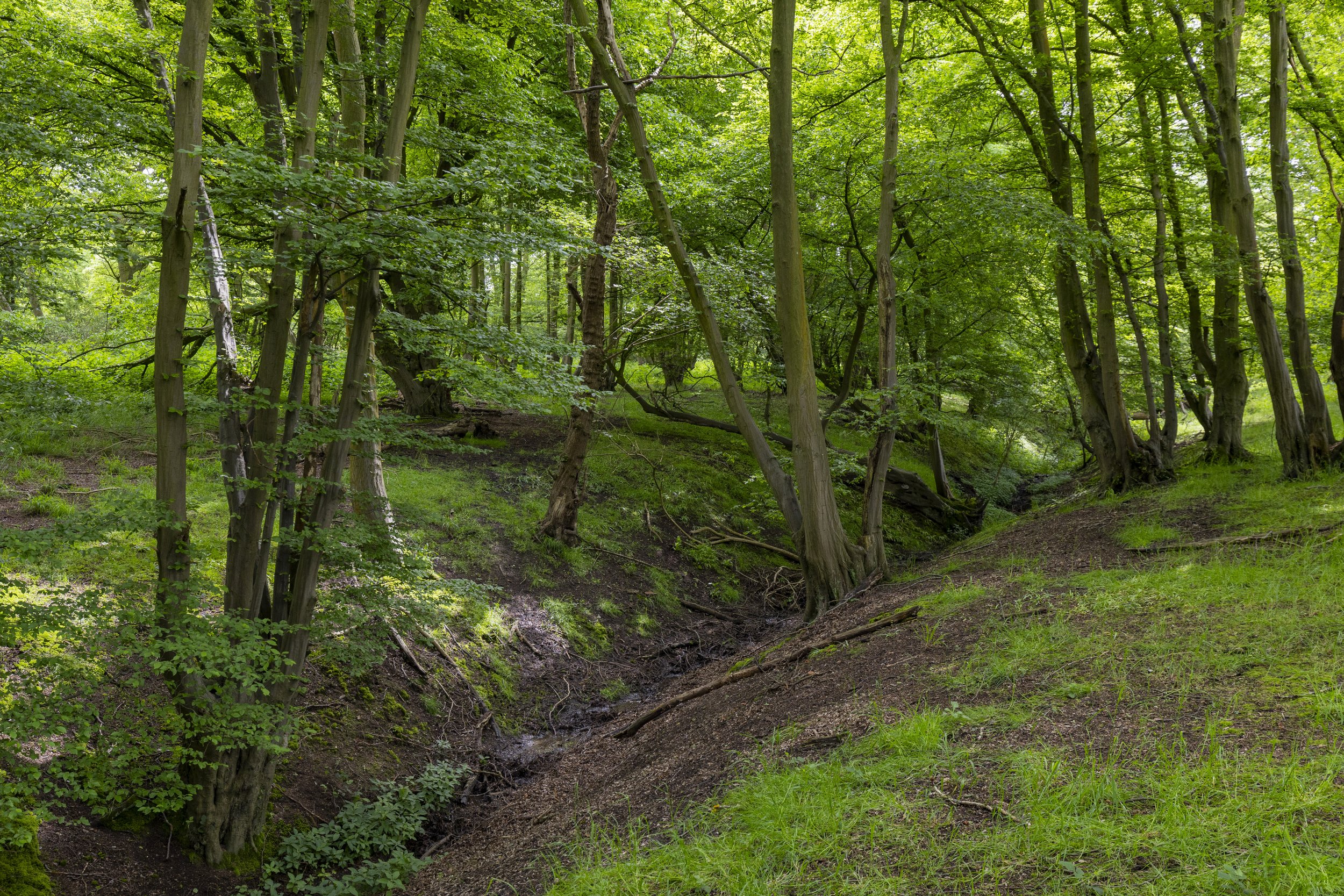
Nattergal’s third wildland is Harold’s Park in Essex, a 206 hectare site, steeped in history and with views of the London skyline. We plan to transform the low productivity arable fields, intensive grassland and Christmas tree plantations into an abundance of biodiversity and wildlife.
Harold’s Park Wildland
Why Harold’s Park?
-

Context
Harold’s Park, which sits within the Green Belt, has a rich history dating back to the 11th century when Anglo-Saxon King Harold Godwinson (of Bayeux tapestry fame) used the grounds for hunting deer and wild boar. In more recent times, it was a popular equestrian centre and sold Christmas trees from the farm in the winter. Nattergal chose this site because of the unique combination of its history and potential for nature restoration. Nattergal will be returning Harold’s Park Farm to wood pasture, which will be reminiscent of the ancient deer parks from 1,000 years ago.
-

Vision
Harold’s Park is ripe for rewilding. Although it is a largely ecologically degraded landscape, there are hotspots of life all around the land; ancient woodland, several ponds, a scattering of smaller fields, and a selection of unkept hedges – all of which will give us a great start to re-establishing natural processes. In the early stages, we will give nature a helping hand, but for the most part, we will stand back and let nature take the lead, as we re-introduce free-roaming ancient breed cattle, pigs and ponies to shape and drive the ecosystem.
A Fascinating History
As stories from the past unfold, our understanding of Harold’s Park’s rich history continues to evolve. Once the deer hunting ground for King Harold II, the land was more recently used for arable farming.
John Mackie, a Scottish farmer and Labour politician, bought Harold’s Park Farm in the 1950s. While he wanted to use the land to produce food, he was also keen on planting trees and allowing the public to enjoy the benefits of the countryside. He was appointed chair of the Forestry Commission in 1976 and in 1981 joined the House of Lords.
John Mackie sold the farm to the Church of England and stayed on as an AHA tenant. His son, George, succeeded the tenancy. In the 1970s he began to diversify from traditional farming. He established an equestrian business and grew and sold Christmas trees from the farm. In the 1980s he began to open up a number of ponds, planted trees and widened public access on the farm.
On George’s sad passing in 2020, the Church put the farm up for sale. The site was was purchased for rewilding by Nattergal in 2024.
Our Plans for Nature
Baseline Monitoring
We measure across a huge range of taxa using a number of traditional and modern methodologies. For example we are surveying bird populations in three different ways: area-based surveys (CBC), transect-based surveys (BBS) and with bioacoustics sensors, which simultaneously monitor and baseline our bat population too. We are also baselining invertebrates (using eDNA), carbon (using soil analysis and lidar), soil fungi & fauna, butterflies, other pollinators, veteran trees, aquatic diversity and much more.
Understanding what we have today, being able to track change over time, and creating controlled experiments, means we will contribute to furthering the academic literature on rewilding, and demonstrate biodiversity recovery and carbon sequestration at Harold’s Park in an evidence-based way.
Image: Nattergal Ecologist Rachel Blount
Letting Nature Flourish
Nattergal will collaborate with a wide range of stakeholders, and apply learnings from its other rewilding sites and the Knepp Estate, to re-establish natural processes and restore Harold’s Park Farm to a haven for nature.
In terms of early interventions, we’ll restart a traditional hornbeam coppice rotation to replicate the actions of beavers. Breaking land drains will help to restore hydrological function. Bringing in species-rich green hay will restore locally extinct wildflowers. Then we will reintroduce the ecosystem drivers; ancient breed pigs, cattle and wild ponies. Together with the wild deer, they’ll shape the new ecosystem.
Having kickstarted the system and brought back natural processes we will step back and let nature take the lead.
Image: the Knepp Estate after 20 years of rewilding
Current Ecology
The site is currently largely ecologically depleted across the hard grazed pony paddocks and ploughed arable fields. However, the farm has been sensitively managed for nature, with small fields, wild hedges and well managed woodlands, margins, edges and hedges all hotspots of biodiversity, waiting to explode into the fields.
Crucial biodiversity hotspots and seed sources include two areas of wonderful ancient woodland (both classed as priority habitat) and a series of ponds. Alongside ancient oak pollards and hornbeam coppice there’s plenty of deadwood and open-grown veteran trees.
As a science-led organisation, ecological monitoring is crucial to shaping our plans and demonstrating changes over time. Accordingly, our natural capital baseline is well underway…
Community Benefits
Harold’s Park Wildland will deliver a wide range of community benefits including water purification, improved soil function and potential flood reduction, as well as local job creation, volunteering opportunities and educational rewilding tours.
Given its proximity to London, Harold’s Park Wildland will also present an invaluable opportunity for children in urban areas to access, learn about, and connect with nature, something we are particularly excited about.
Image: Local stakeholder group explores Harold’s Park
Support For Harold’s Park
Sophie Cowdy, Local Artist
“I was filled with joy when I learned Harold’s Park had been purchased for nature restoration. I was concerned that the site would be used for housebuilding and the existing biodiversity on the site would be destroyed.”
Essex County Council’s Climate Czar Councillor Peter Schwier
“Essex County Council is excited to have a Nattergal project in the county. Creating a 500-acre rewilding site in Nazeing aligns with our ambitious target of transforming 30% of Essex into wild and nature areas. We look forward to working with a forward-thinking nature restoration company to support the council’s wider climate action agenda, which will help nature to recover, reduce flooding, lock up carbon, and introduce local people to, and enthuse them about, these important issues.”

Rewilding Site Locations
Boothby Wildland
Boothby Lodge Farm, Boothby Pagnell, Lincolnshire NG33 4DE
Harold’s Park Wildland
Harold's Park Farm, Nazeing, Waltham Abbey EN9 2SF
High Fen Wildland
High Fen Farm, Thornham Road, Methwold Hythe, Norfolk IP26 4PJ










